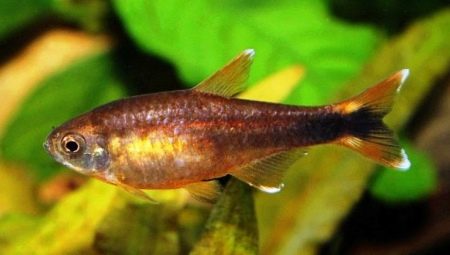Many aquarists choose a copper tetra for its spectacular appearance and unpretentiousness in care. It treats plants and other inhabitants of the aquarium well and is a real decoration of the house.
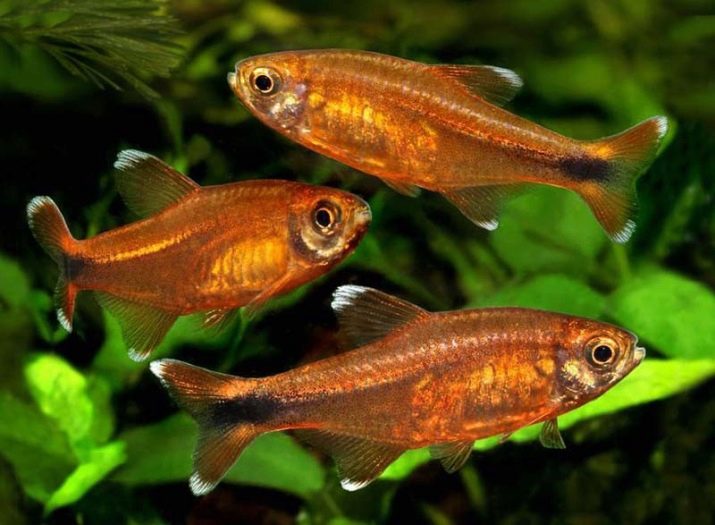
Description
Copper tetra is a small fish 3-5 cm long. It has a slightly elongated and flattened trunk from the sides, and its difference is the absence of a fat fin, while this is a characteristic feature of the haracin species, to which the tetra belongs. But this fish has excellent hearing due to the presence of a Weber organ between the inner ear and the swimming bladder, it is able to hear sounds in the range of 13 kHz.
Another distinguishing feature is the unusual swim bladder, which is necessary for enriching the body with oxygen. The fact is that in nature tetra lives in muddy ponds in which this necessary element is not enough, and this bubble allows it to fully breathe. The eyes of this fish are large, slightly bulging, the jaws are strong, with the lower protruding from the upper.
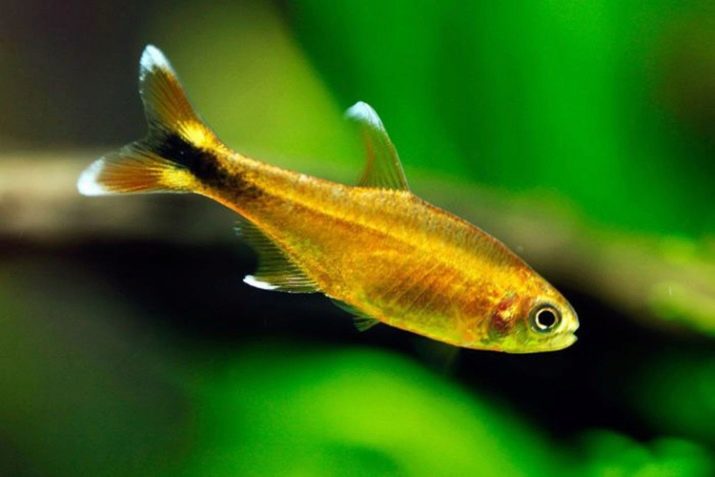
Males have a colorful color, in which bluish-silver shades prevail. Females are more dull in color, usually green-yellow. The name "copper" tetra was given for the peculiarities of scales, which during spawning are filled with a copper shine. Along the center line of the body is a dark strip with a yellow dash on top. Males usually have reddish-brown fins, and females are yellowish.
Differ in fish and size. So, the length of the female reaches 5 cm, and the size of the males reaches 3 cm. The life span of a copper tetra is a maximum of 3 years.
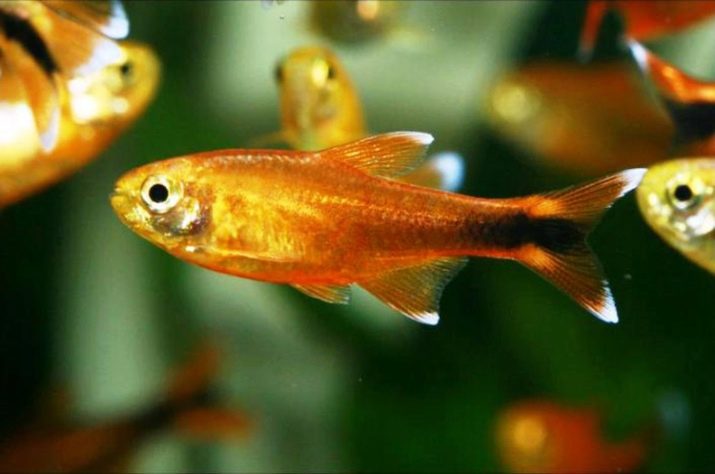
Maintenance and care
Copper tetras are schooling flocks, so they are usually bought in groups. The more individuals kept together, the greater the volume of water they need. Usually 70 liters is enough for an average flock. The natural conditions for the full development of these fish are soft water with a high content of tannins and low acidity, so it is recommended that owners create conditions that are close to natural. In such water, the fish will look even brighter.
To make water resemble natural aquarists advise adding peat or dry foliage to the aquarium. The optimum temperature limits are 23–28 degrees, the acidity is 6.0–8.0, and the recommended hardness is 5–20H. In general, these are picky creatures who will feel comfortable in other conditions.
However, it is better to avoid abrupt water changes. If the owner decided to replace it, then you need to do this gradually.
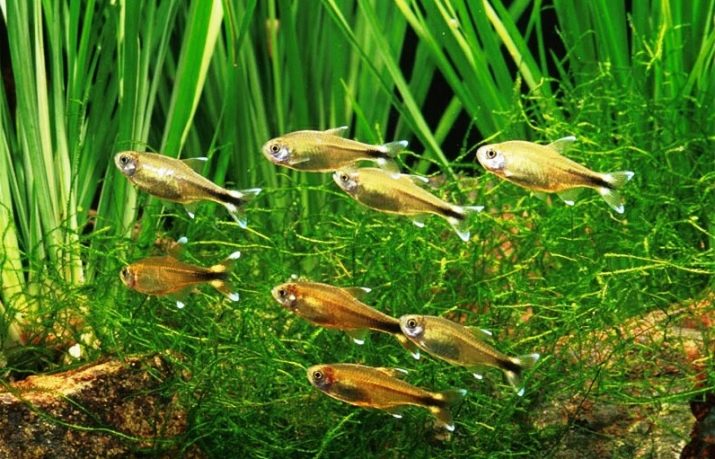
As for the soil, then give preference to quartz varieties that do not affect the composition of water. Several small-leaved plants can be planted around the perimeter for aesthetics, so that the fish swim among the greenery, but do not populate the center of the aquarium with algae - this will be a site for the free movement of fish.
At the bottom you can place a grotto, driftwood, caves, twigs, do not forget to add dry leaves, for example oak leaves (due to the content of tannins, they reduce acidity and have an antibacterial effect). In addition, the dried foliage stains water in a dark color, against which bright fish look very impressive.
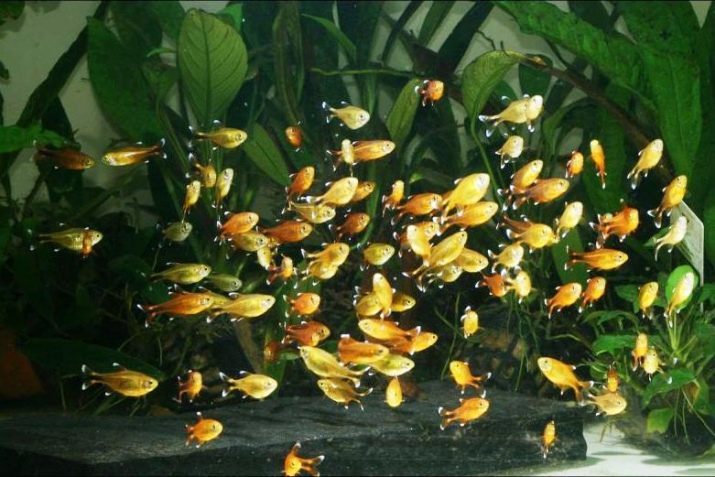
Feeding
In the natural environment, tetras eat small crustaceans and plants. At home, they are allowed to feed fresh or frozen live food or a special aquarium. For this type of fish, it is recommended to buy dry food in the form of cereals. The fact is that the tetra eats food that floats on the surface of the water or sinks to the bottom, but if the food touches the ground, the fish will no longer eat it.
To maintain the cleanliness of the aquarium, you need to buy food in the form of flakes, which will slowly settle to the bottom, and the fish will have time to feast on them. For the same purpose, any food should be offered in a dosed manner.
It is enough to feed a school of fish a couple of times a day. Be sure the diet should include protein. His fish can be obtained from bloodworms, enchitrea, corvette or daphnia. Protein is needed for full breeding and colorful color. Also aquarists advised not to include in the menu for tetra tubulo.
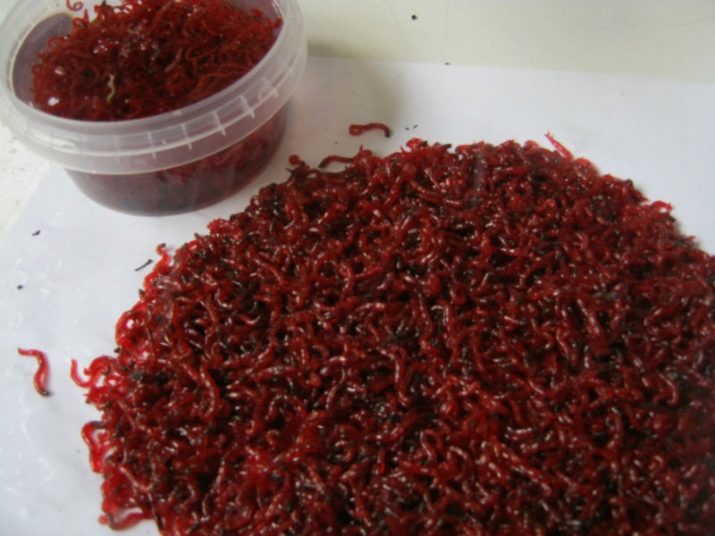
Breeding
Females are ready for breeding when they reach 4 months of age, males mature in six months. To obtain offspring, females and males are sent to spawning with a volume of at least 50 liters. It is recommended to lay out the bottom with a separator grid, as well as decorate with vegetation.
For breeding fish suitable water with a temperature of 24-27 degrees and an acidity of 6.0-6.6 pH. It is usually customary to pour it at a level of 15 cm. Before placing the fish in the spawning, they are seated in separate containers and well-fed. After that (in the evening), females and males are placed in a spawning ground, and spawning should occur in the morning. Each female lays up to 400 eggs.
At the end of spawning, the fish are returned to a regular aquarium. After 4-6 days, independent fry will appear. It is recommended to start their feeding with ciliates and rotifers.
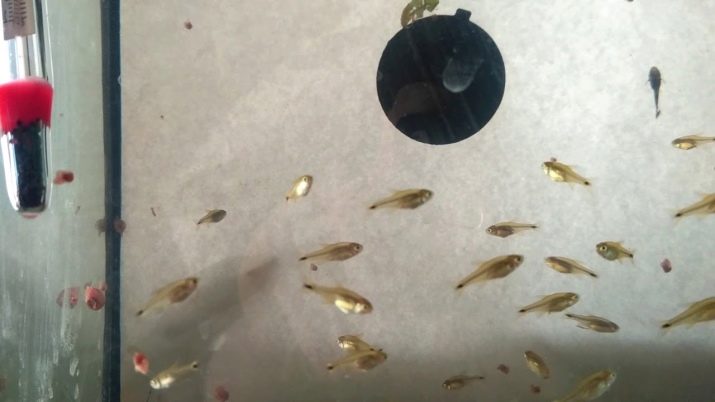
Compatibility
The copper tetra is distinguished by friendliness and loyalty to its neighbors and gets along well with other aquarium inhabitants, for example: gourami, guppies, scalars, apistograms, shrimps, zebrafish, barbs, peace-loving catfish, etc.
It is not recommended to grow tetra in one aquarium with veil species, since a curious fish may show interest in the soft fin of a neighbor and eat it around.
Also, aquarists are not advised to keep together tetra and large aggressive fish that can take small individuals for prey.
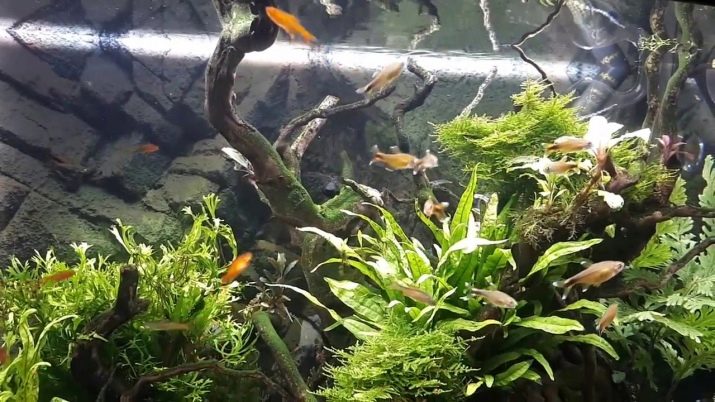
For more information about the features of these fish, see the next video.
